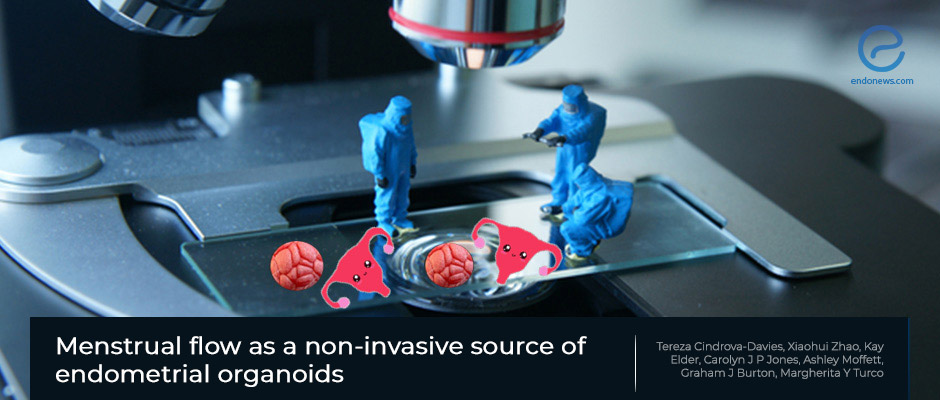Non-invasive Construction of Endometrial Organoids
Sep 15, 2021
Endometrial organoids derived from menstrual flow carry out the same characteristics as biopsy-derived organoids.
Key Points
Highlights:
- Endometrial organoids derived non-invasively from menstrual flow, show similar in-vivo features as organoids derived from biopsies.
Importance:
- An organoid is supposed to be a simplified and miniaturized in-vitro 3D version of an organ.
- Organoids have been shown to be useful in understanding normal physiology, disease pathophysiology, and prediction of drug effects.
- The non-invasive method of deriving organoids, apart from easy accessibility, provides a lot of opportunities from understanding the endometrial function to using it to treat infertility and investigate pathological mechanisms of some conditions such as endometriosis.
What's done here:
- This pilot study includes 7 healthy individuals with normal menstrual cycles and 7 patients who underwent treatment for in-vitro fertilization.
- The menstrual flow of the healthy control group was collected with a menstrual cup. The endometrial biopsies and the menstrual flow of the patients were also obtained; organoids prepared, and the characteristics of organoids derived from both sources were compared.
Key results:
- Endometrial organoids derived from menstrual flow and endometrial biopsies showed no difference in terms of derivation efficiency, growth rate, and proliferation rate.
- The transcriptomic characteristics of both organoids were identical by RNA sequencing.
- Both of the organoids responded similarly when sex steroids and early pregnancy hormones were applied.
Lay Summary
Organoids are 3D culture structures established in vitro and they reflect the aspects of the tissue or the organ they represent. They are seen as important tools in the evaluation of normal development, disease course, and the prediction of the drug effects.
Endometrial organoids have been shown to be useful in evaluating the pathogenesis of many processes including maternal-fetal interactions in early pregnancy and pathophysiology of certain gynecological disorders such as endometriosis and endometrial cancer.
In previous studies, endometrial organoids were derived from the biopsy specimens which require an invasive approach.
The researchers also performed RNA sequencing and it demonstrated the pairing of organoids. The expression of epithelial, secretory, and stem cell markers was identified in both. Menstrual flow organoids were hormone-responsive. The transcriptome of the menstrual flow organoids were identical to the organoids derived from biopsies and they responded similarly to sex steroids and early-pregnancy hormones.
When the phases of the endometrial cycle are concerned, both the menstrual flow and biopsy organoids underwent similar changes when sex steroids were applied. As the endometrial cycle is affected by a lot of variables, the physiology and the function of the normal endometrium is challenging. The authors concluded by explaining how their non-invasive technique of deriving endometrial organoids may be helpful in investigating the normal endometrium even when under the influence of different factors such as BMI, age, etc., also for fertility treatments and personalized medicine. With the possibility to freeze, biobank, or thaw the organoids, an important knowledge gap will be overcome and they will also be helpful in the investigation of the pathological endometrial conditions such as endometriosis and endometrial cancer.
Research Source: https://pubmed.ncbi.nlm.nih.gov/34140633/
endometrium organoids menstrual flow infertility in-vitro fertilization endometrial biopsy endometrial organoids

